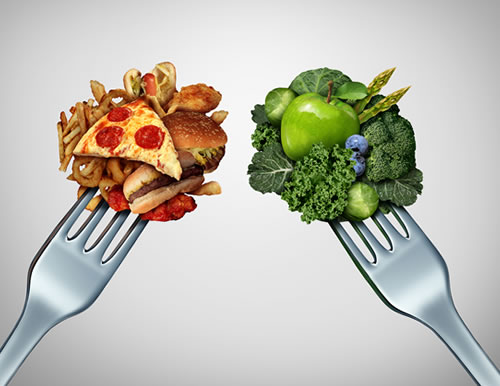With the plethora of contradictory information available about diet and nutrition, and a new popular diet entering the mainstream on a continual basis, it can become fairly challenging trying to figure out what is best for you and your family in terms of the best foods to eat and the nutrition they do (or don’t) contain. And to discover that what most of us have been told all of our lives about the basic food groups, diet and nutrition is not true, well, it’s no wonder most of us are confused.
So here’s a quick overview of some basics about diet and nutrition, and how a plant-based diet fits into the whole equation.
Nutrition 101
This section outlines some of the basic nutritional building blocks every body needs in order to thrive and remain healthy.
Protein
The human body requires amino acids to build, maintain, and repair its tissues. These amino acids can come from either animal or plant sources. And the human body simply cannot tell the difference between the two sources.
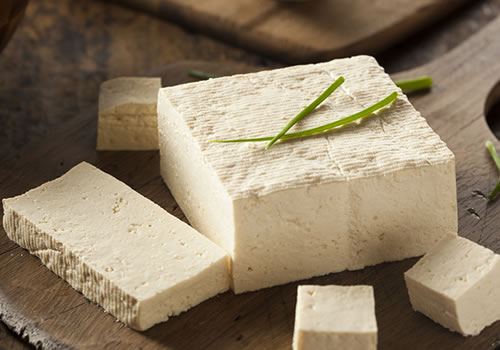 Since the human body does not store protein, the consumption of too much protein is unhealthy and can cause a number of health problems including cancer, heart disease, obesity, diabetes, osteoporosis, and kidney issues. Animal products not only contain high amounts of protein, they are also loaded with saturated fat and cholesterol.
Since the human body does not store protein, the consumption of too much protein is unhealthy and can cause a number of health problems including cancer, heart disease, obesity, diabetes, osteoporosis, and kidney issues. Animal products not only contain high amounts of protein, they are also loaded with saturated fat and cholesterol.
Plant products do not contain saturated fat or cholesterol, and provide more than enough protein and fiber the body needs. Everything from beans, tofu, nuts and plant-based meats to grains, vegetables and fruits contain more than enough daily protein the human body requires.
Carbohydrates
Experts have sure given carbs a bad rap over the years. But the simple truth is that the human body must have carbohydrates. The body converts the foods containing carbs into glucose, which is the body’s main source of energy that can be used immediately or stored for later usage.
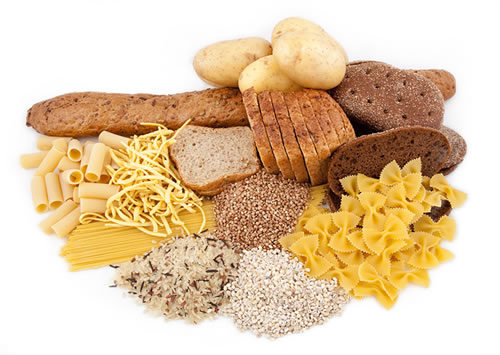 Of course, there are good carbs and not-so-good carbs available out there. The best carbs come from foods that contain fiber such as vegetables, whole grains, and fruits. The less-than-stellar carbs come from foods that are processed and have had sugar added such as white bread, cookies, cakes or white rice.
Of course, there are good carbs and not-so-good carbs available out there. The best carbs come from foods that contain fiber such as vegetables, whole grains, and fruits. The less-than-stellar carbs come from foods that are processed and have had sugar added such as white bread, cookies, cakes or white rice.
Fat and Cholesterol
Dietary fats are essential to provide energy to the human body and to support cell growth. Fat also helps to protect organs, absorb vitamins and minerals, keep the body warm, generate hormones, and build cell membranes. It is also important for blood clotting, muscle movement, and inflammation.
Similar to carbs, there are good (such as monounsaturated and polyunsaturated) fats and bad (trans and saturated) fats. Good fats come from vegetables, nuts, seeds and canola oil, while bad fats come from partially hydrogenated oil, dairy products and other animal products (meat, poultry and fish).
When it comes to cholesterol, dietary cholesterol is unnecessary and any amount of it in the diet will raise overall blood cholesterol levels, which in turn leads to a higher risk of heart disease. And as it turns out, animal products are the only sources of dietary cholesterol.
Calcium and Vitamin D
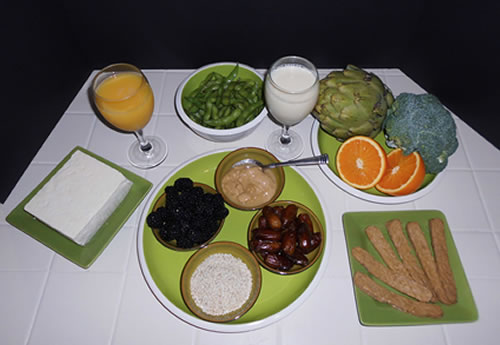
Calcium is important for bones because it is a major component of bones. And you need calcium in the blood to keep muscles like your heart contracting efficiently. We require Vitamin D (along with exercise) to help keep calcium in our bones.
Calcium is contained in plant foods such as broccoli, kale, brussel sprouts, fortified non-dairy milks, juices, nuts, black beans, and a variety of other vegetables and fruits. Dairy products are high in saturated fat and cholesterol, and you do not need to consume them for calcium.
And spending a short amount of time outside in the sunlight is a good way to generate Vitamin D in the body, in addition to consuming fortified foods such as cereals and non-dairy milks.
Other Vitamins (A, B6, B12, C, E)
With the exception of vitamin B12, plant-based foods contain nearly all other vitamins critical to the proper function of the human body. In fact, only plant-based foods contain Vitamin C. And you can obtain Vitamin B12 from supplements and/or fortified foods.
 Fiber
Fiber
Dietary fiber is important in order to prevent constipation. Foods that contain fiber also aid in healthy weight maintenance, and lower the risk of heart disease and diabetes.
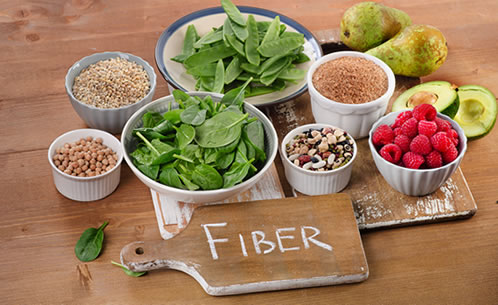 Animal foods including dairy contain zero fiber; plant-based foods such as vegetables, fruit, beans and whole grains are the only sources of dietary fiber.
Animal foods including dairy contain zero fiber; plant-based foods such as vegetables, fruit, beans and whole grains are the only sources of dietary fiber.
Iron
An important part of hemoglobin (a component found in red blood cells that carries oxygen from the lungs and throughout the body), the human body requires iron to generate an adequate amount of healthy oxygen-carrying red blood cells. Iron also helps a body maintain healthy skin, hair and nails.
While red meat contains iron, many plant-based foods (that do not also contain the saturated fat and cholesterol found in red meat) also contain iron including beans, oatmeal, nuts, green leafy vegetables, seeds, tempeh, whole grains, dried fruits, and tofu.
Omega 3 and 6
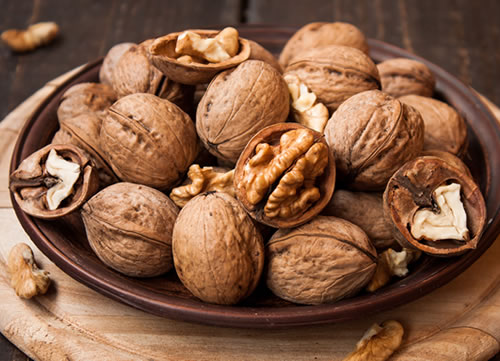
Omega 3 and 6 are fatty acids that are components of cell membranes needed to help regulate blood pressure and inflammation.
While fish and fish oils contain these fatty acids, these are no longer considered healthy sources thanks to fish flesh’s contamination due to water pollution from toxic waste, mercury, lead, PCBs, arsenic, and other toxins.
Green leafy vegetables, beans, flax seeds, walnuts, canola oil, tofu and seaweeds are all healthier sources of omega 3 and 6 fatty acids.
Diet 101
Weight Watchers. The Atkins Diet. The Paleo Diet. The South Beach Diet. The Zone. Low-carb. Gluten-free. Raw. Vegan.
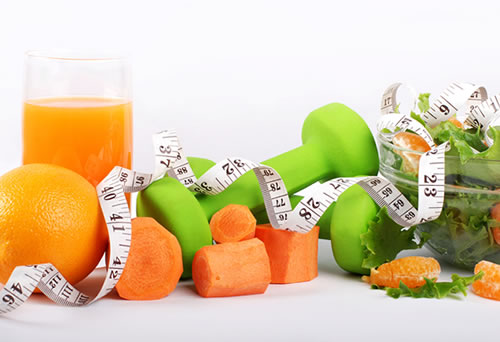 Yikes. Who has the time or energy to figure it all out, let alone stay on track with one or more of the many popular diets out there?
Yikes. Who has the time or energy to figure it all out, let alone stay on track with one or more of the many popular diets out there?
Sticking to a Diet
Nearly everyone is guilty of this (since it’s human nature): We gravitate toward the diet that offers the path of least resistance, the one that allows us to continue with habits that we know are probably not the best for our overall health and well-being. And then it’s a coin toss as to whether or not we’ll stick to it long enough to reach our goals. And if we do stick to a diet, is it really very healthy for us in the long run?
This is where your logic and reason can come in handy: If a certain food or group of foods has been proven to cause cancer, heart disease, diabetes and obesity, does it make sense to load up on those foods in order to lose weight? Probably not.
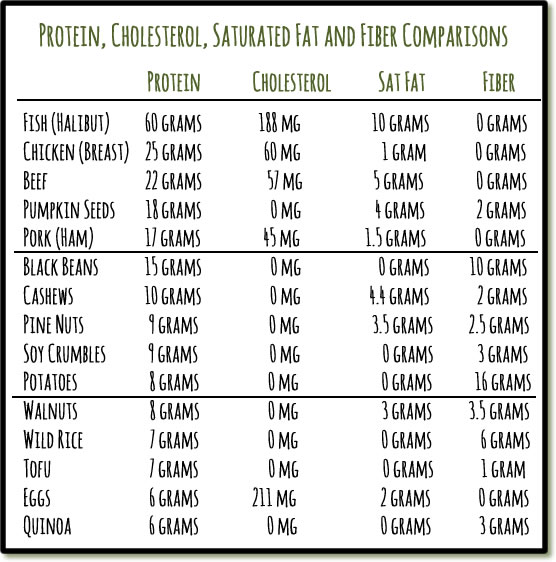
The Best Diet to Follow
When it comes to figuring out the best diet to follow, it also all comes down to math: There is a basic formula or ratio to follow for the human body (in most cases). You should try to follow these recommended dietary ranges:
- Carbohydrates: 45-65% of calories
- Fat: 20-35% of calories
- Protein: 10-35% of calories
A common standard ratio is 50% carbohydrates, 30% fat and 20% protein. But if someone is trying to lose weight, the ratios vary depending on the reduction in carbs and fat (and possibly increase in protein) required to achieve the weight loss goal.
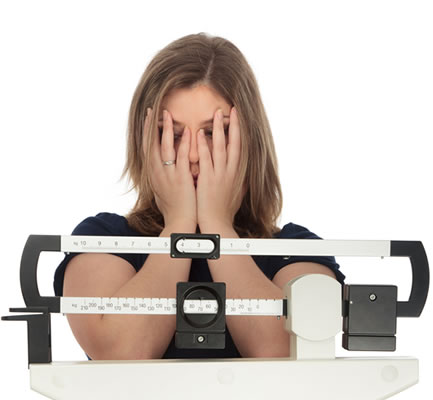 For weight maintenance, moderately active women should try to follow a 2,000-calorie recommended daily diet. And moderately active men should stick to 2,600 calories a day. The USDA offers this daily calorie guide based on gender, age and activity levels:
For weight maintenance, moderately active women should try to follow a 2,000-calorie recommended daily diet. And moderately active men should stick to 2,600 calories a day. The USDA offers this daily calorie guide based on gender, age and activity levels:
http://www.cnpp.usda.gov/sites/default/files/usda_food_patterns/EstimatedCalorieNeedsPerDayTable.pdf.
 Luckily, no one needs to get out the abacus or calculator and crunch the numbers themselves; there are some great free tools available: http://www.freedieting.com/tools/calorie_calculator.htm; http://www.bodybuilding.com/fun/macronutcal.htm.
Luckily, no one needs to get out the abacus or calculator and crunch the numbers themselves; there are some great free tools available: http://www.freedieting.com/tools/calorie_calculator.htm; http://www.bodybuilding.com/fun/macronutcal.htm.
As for what and how much to eat throughout the day, it doesn’t take much to reach the calories, carbs, fat and protein limits by following the Standard American Diet (SAD but true). In fact, tracking all of this can prove quite the eye-opening experience for most people.
How a Plant-Based Diet Fits into the Equation
With a plant-based diet, you really don’t need to worry about counting calories or whether you’re getting all of the vitamins and nutrients your body needs — as long as you’re mixing it up as much as possible. By incorporating a mix of vegetables, whole grains, fruits, nuts, seeds, beans and healthy fats into your diet, you will lose weight and feel better almost immediately. And you can eat more of it before you’ll ever reach your caloric intake goals for the day.
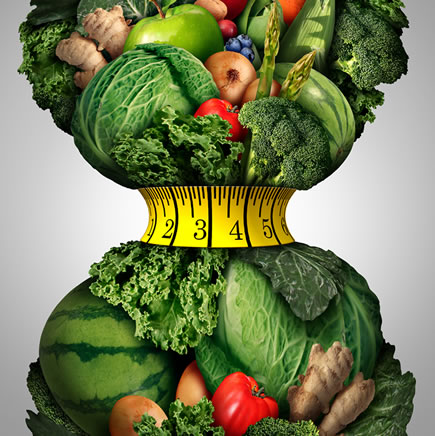 Not only is a plant-based diet better for you in terms of your weight and energy levels, it is also proven to lower the risk of contracting heart disease, certain cancers, diabetes and other illnesses and diseases.
Not only is a plant-based diet better for you in terms of your weight and energy levels, it is also proven to lower the risk of contracting heart disease, certain cancers, diabetes and other illnesses and diseases.
Conclusion
With more and more people realizing the multiple health and nutritional benefits of a plant-based diet, they are trying it in some shape or form — whether going 100% all the way, or experimenting with it by taking a more gradual and intermittent approach.
With so many flavors, textures, new faux meat and non-dairy products, and restaurants and cafes offering veg*n options available today, it’s become easier than ever to give a plant-based diet a whirl.
If you’d like to discover some delicious plant-based recipes, check out Dynamic Vegan’s recipe collection today. And with access to MV Chef, you can learn all about plant-based ingredients, where to find them, and how to use and pull them together in recipes, how to “veganize” your standard favorite recipes, and much more.
Other Related Articles
http://www.nursingdegree.net/blog/19/57-health-benefits-of-going-vegan/
http://www.motherearthliving.com/food-and-recipes/food-for-health/all-about-protein-zmfz15sozhou.aspx
http://www.pcrm.org/health/diets/vegdiets/how-can-i-get-enough-protein-the-protein-myth
https://ods.od.nih.gov/HealthInformation/dailyvalues.aspx
http://health.usnews.com/health-news/diet-fitness/heart/articles/2010/09/10/the-best-low-carbohydrate-diet-one-thats-plant-based
http://www.medicaldaily.com/vegans-eat-carbs-and-still-lose-weight-why-you-should-give-diet-shot-310106
http://www.pcrm.org/nbBlog/white-lies-five-milk-myths-debunked
http://www.veganhealth.org/articles/bones
http://www.veganhealth.org/articles/iron
http://www.healwithfood.org/best-dietary-sources/plant-based-omega-3-for-vegans.php
https://www.vegansociety.com/resources/nutrition-and-health/vitamins-minerals-and-nutrients/vitamin-b12-your-key-facts/what-every-vegan-should-know-about-vitamin-b12
http://www.pcrm.org/health/health-topics/a-guide-to-healthy-weight-loss
Sources for This Article
http://www.everydayhealth.com – Why Carbohydrates Are Important for Your Diet
https://www.nhlbi.nih.gov/ (National Heart, Lung and Blood Institute) – High Blood Cholesterol: What You Need to Know
http://www.health.harvard.edu (Harvard Health Publication) – The Truth About Fats: The Good, The Bad, and the In-Between
http://www.webmd.com – Vitamins & Supplements
http://www.mayoclinic.org – Nutrition and Healthy Eating
http://www.eufic.org (European Food Information Council) – The Importance of Omega-3 and Omega-6 Fatty Acids
https://www.hsph.harvard.edu – Omega-3 Fatty Acids: An Essential Contribution
http://usda.gov – Estimated Calorie Needs Per Day by Age, Gender, and Physical Activity Level
http://blog.myfitnesspal.com – Ask the Dietitian: What’s the Best Carb, Protein and Fat Breakdown for Weight Loss?

